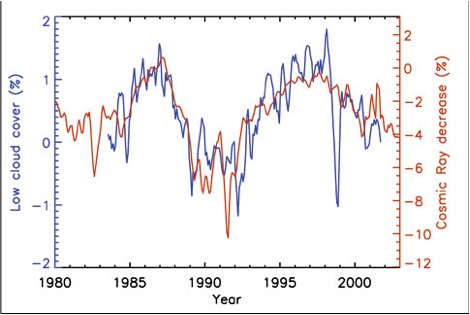PDF]Tomicic et al., 2018 - Atmos. Chem. Phys
https://www.atmos-chem-phys.net/18/5921/2018/acp-18-5921-2018.pdf
by M Tomicic - 2018 - Related articles
Apr 27, 2018 - https://doi.org/10.5194/acp-18-5921-2018 ... expand the parameterization presented in Dunne et al. .... of the schematic from Svensmark et al.
Abstract. One hundred and ten direct measurements of aerosol nucleation rate at high ionization levels were performed in an 8 m3reaction chamber. Neutral and ion-induced particle formation from sulfuric acid (H2SO4) was studied as a function of ionization and H2SO4 concentration. Other species that could have participated in the nucleation, such as NH3 or organic compounds, were not measured but assumed constant, and the concentration was estimated based on the parameterization by Gordon et al. (2017). Our parameter space is thus [H2SO4] = 4×106 −3×107cm−3, [NH3+org] = 2.2 ppb, T = 295 K, RH = 38 %, and ion concentrations of 1700–19 000 cm−3.
The ion concentrations, which correspond to levels caused by a nearby supernova, were achieved with gamma ray sources. Nucleation rates were directly measured with a particle size magnifier (PSM AirmodusA10) at a size close to critical cluster size (mobility diameter of ∼ 1.4 nm) and formation rates at a mobility diameter of ∼ 4 nm were measured with a CPC (TSI model 3775).The measurements show that nucleation increases by around an order of magnitude when the ionization increases from background to supernova levels under fixed gas conditions.The results expand the parameterization presented in Dunne et al. (2016) and Gordon et al. (2017) (for [NH3 + org] =2.2 ppb and T = 295 K) to lower sulfuric acid concentrations and higher ion concentrations. The results make it possible to expand the parameterization presented in Dunne et al. (2016)and Gordon et al. (2017) to higher ionization levels.



